Several weeks ago, a new exhibition was announced to take place in London. The Phillips ‘Made in Germany’ exhibition was to showcase a series of early A. Lange & Söhne Datograph and Lange 1 watches between 9-14th March at Phillips in Berkeley Square.
The exhibition was to include more than 20 important and rare watches, spread over the two aforementioned collections, along with a few pieces which are part of upcoming Philips auctions.
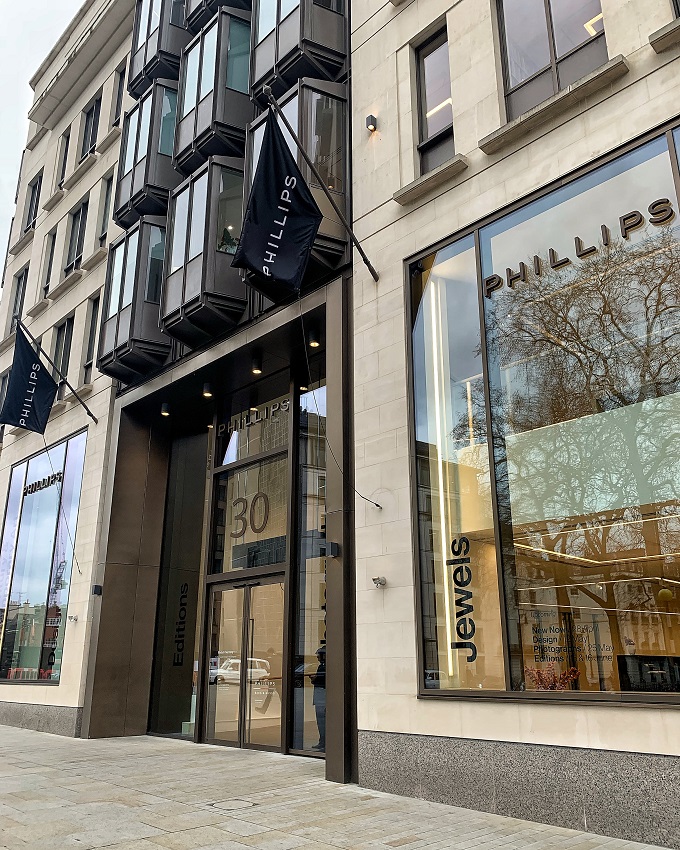
Phillips London, Berkeley Square
As a brand, A. Lange & Söhne is one which has long been held in the highest of regards amongst collectors. The quality of each watch is simply undisputable, and the watches are finished to an incredibly high standard, regardless of whether the watch is at the more accessible end of their catalogue or a super-complicated, high-end piece.
In fact, in the process of making the watches, each movement is assembled once, taken apart, and re-assembled for a second time. The first assembly is to allow each of the components to be adjusted and to fine tune the movement. Following this, the movement is disassembled, with each component subject to cleaning and finishing – even those that nobody other than a watchmaker will ever see. The screws used to initially assemble the movement are replaced with thermally blued screws. And then, finally the movement is reassembled and put into the watch.
When the likes of Philippe Dufour are known to wear an A. Lange & Söhne Datograph, and talk about the brand in such a way as the quote which follows, it really should tell you everything you need to know:
“Take 10 movements out of the current range of any contemporary brand, put them next to a Lange movement and comment honestly”.
With the Phillips ‘Made in Germany’ exhibition came a unique opportunity: to be able to see some earlier and rare pieces by the brand from between 1994 and 2008, as well as to learn more about them. An opportunity I was never going to be able to pass up!
Phillips ‘Made in Germany’ A. Lange & Söhne Exhibition
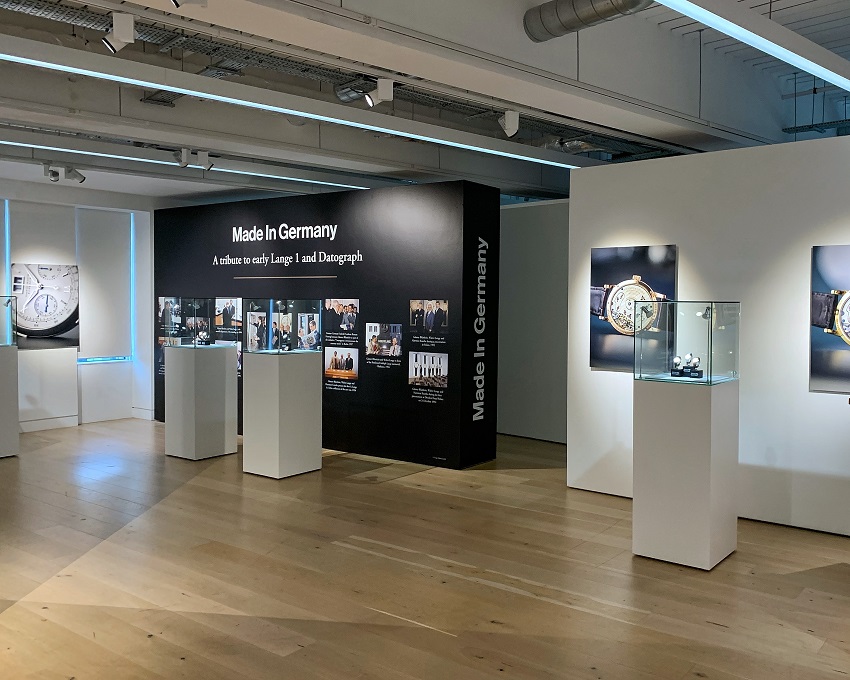
Phillips 'Made in Germany' A. Lange & Söhne Exhibition
When I arrived, the exhibition was split into two sides, one focusing on the Lange 1 collection and the other focusing on the Datograph (named such as the watches are chronographs with the distinctive A. Lange & Söhne big date display at 12 o’clock), and so I started with the Lange 1.
Each display case held a series of watches, with a callout card detailing the reference, and there were detailed explanations around some of the finer, non-descript details which evolved on these early watches that would likely fly under the radar of most.
The two key examples of these details pertain to typography and aesthetic details.
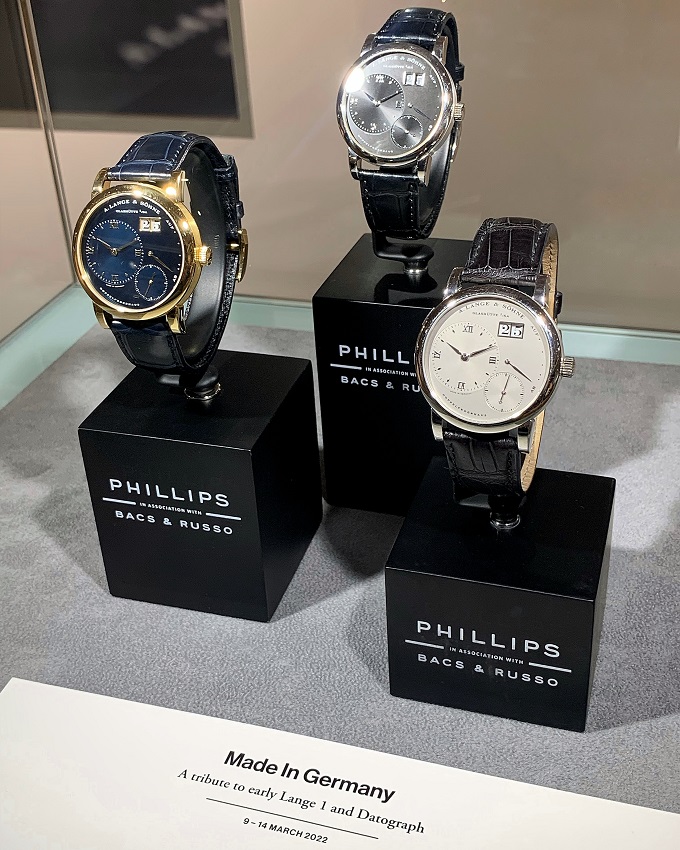
Three Lange 1 watches on display
Firstly, there is the typography used on the bottom of the time-telling dial to denote ‘Made in Germany’. Earlier watches used a more compact font where the letters are closer together (referred to as ‘early MIG’), with the later watches using a slightly more spaced-out typography which is less emboldened (or ‘later MIG’).
The more compact font would fit the ‘Made in Germany’ just inside the 33-minute and 27-minute markers, whereas the more spaced-out typography reaches just beyond these markers.
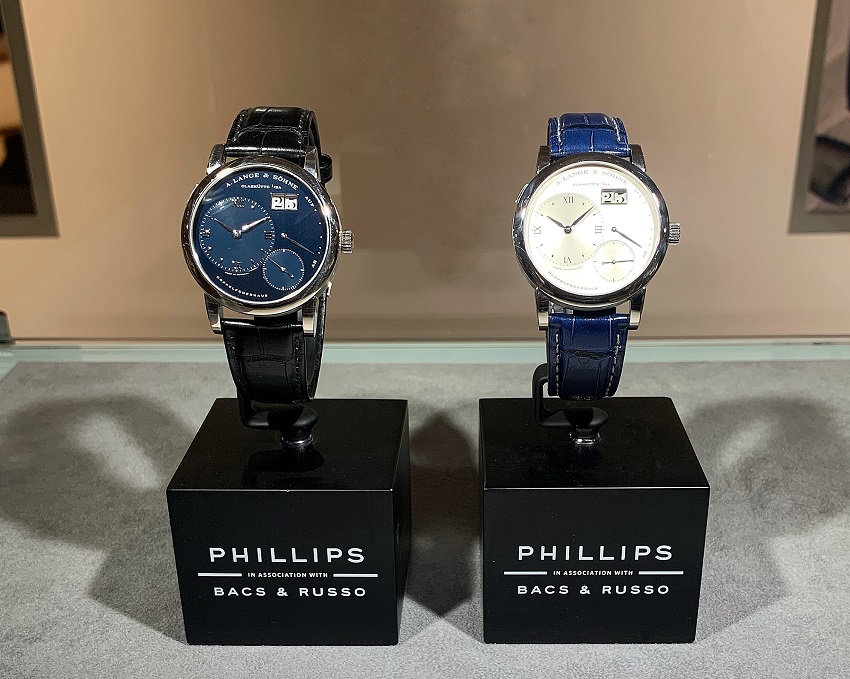
Lange 1 watches with 'early MIG' (L) and 'later MIG' (R)
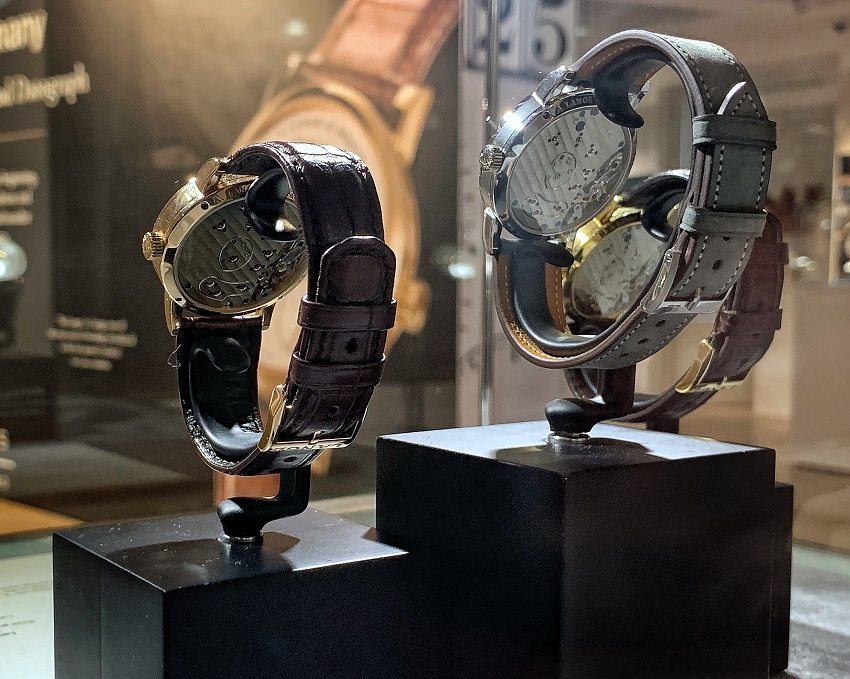
Lange 1 casebacks
The second example was on the reverse side of the watch and focused on the “A. Lange & Söhne” engraving on the caseback. Similarly, earlier watches featured more compact typography engraved into the case, whereas the slightly later watches had spread the typography out to better fill the space around the edge of the case, resulting most noticeably in a slightly more refined ampersand.
Another example was highlighting the difference between using applied and printed numerals on the dial. Where the overall look of the Lange 1 is iconic of the A. Lange & Söhne brand, these finer details which help identify the earlier and later generations of watches are interesting to observe.
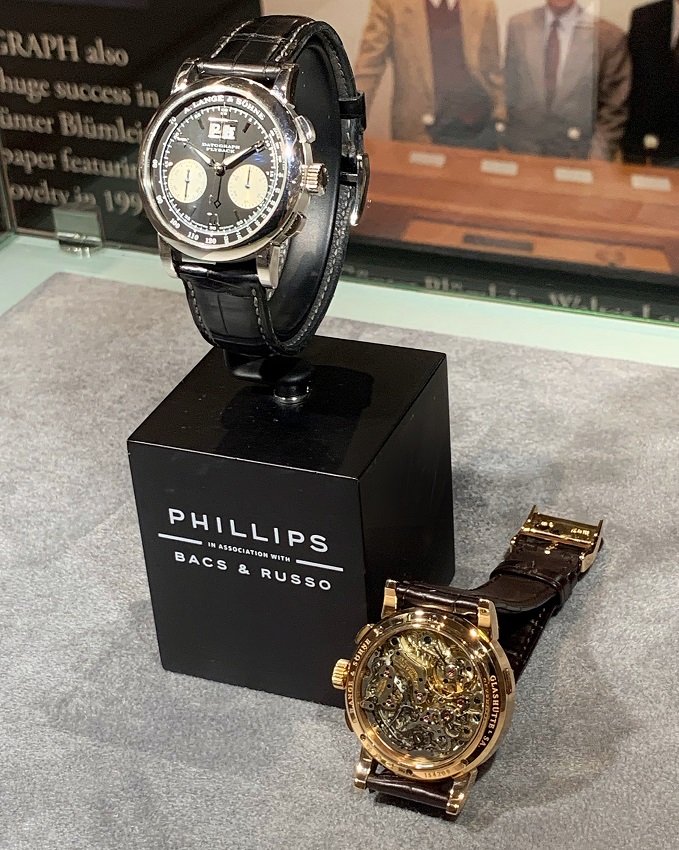
Datograph watch and movement on display
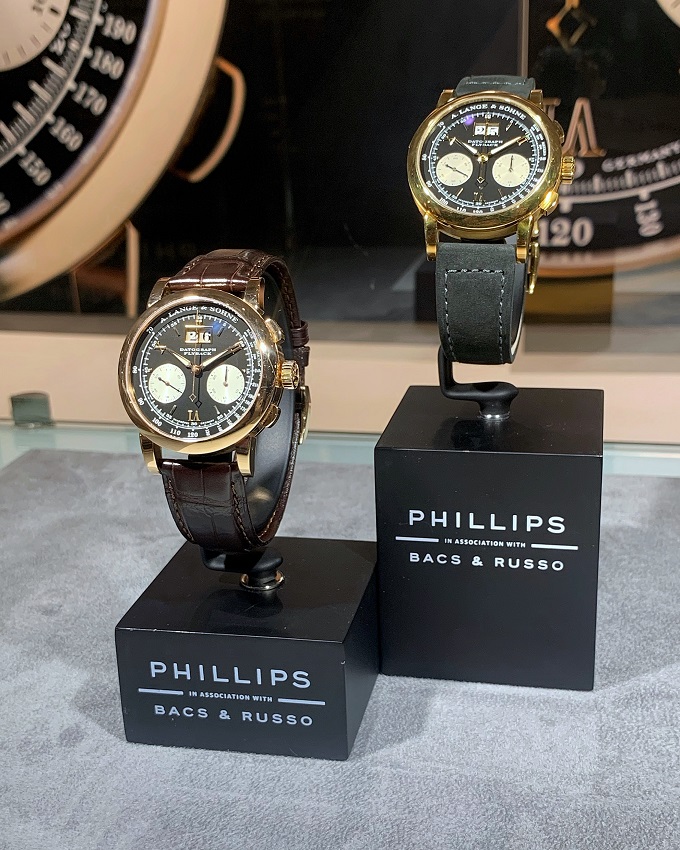
Datograph 403.031 "Philippe Dufour" (L) and 403.041 "Yellow Jacket" (R)
On the other side of the exhibition room were the Datograph display cases. In a similar vein to the Lange 1, the exhibition sought to highlighted examples of the evolution within the early Datograph models, too.
The main example highlighted within the Datograph was the transition in wording on the tachymetre around the periphery of the dial. Where the earlier pieces featured the words “BASE 1000 METER”, on later models this had changed to “BASE 1000 METERS” – just one letter difference, but these are the finer details are particularly helpful when it comes to identifying watches; charting their evolution with such changes helps very much in being able to accurately talk about exactly what generation a watch might be.
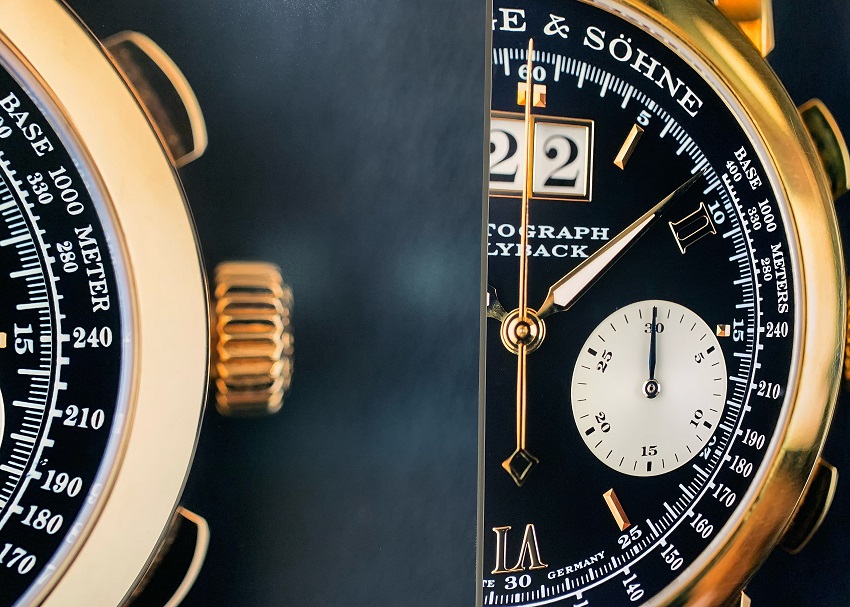
Note the use of "METER" (L) versus "METERS" (R)
Furthermore, there were some incredibly rare Datograph models on display, including two of only 10 known “Pisa” edition (made for Milanese retailer Pisa Orologeria), one of which blued steel centre seconds and sub-dial hands, which makes is a piece unique amongst the other Pisa editions. The official reference number is even appended with an -X (403.025X).
Another example of an exceedingly rare Datograph on display was a Datograph with a baguette diamond bezel, believed to be rare custom orders.
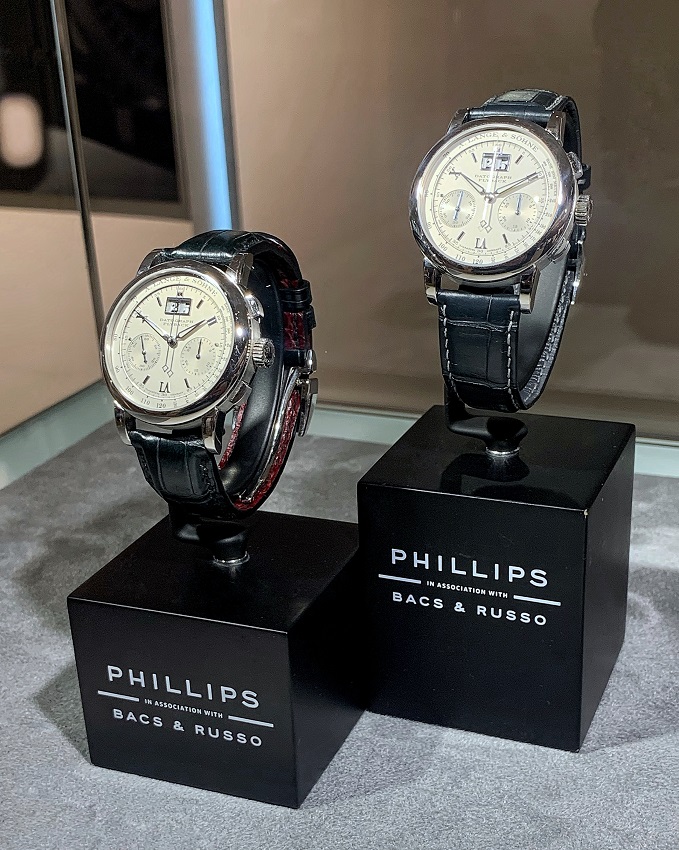
Two of only ten known Datograph "Pisa" watches 403.025X
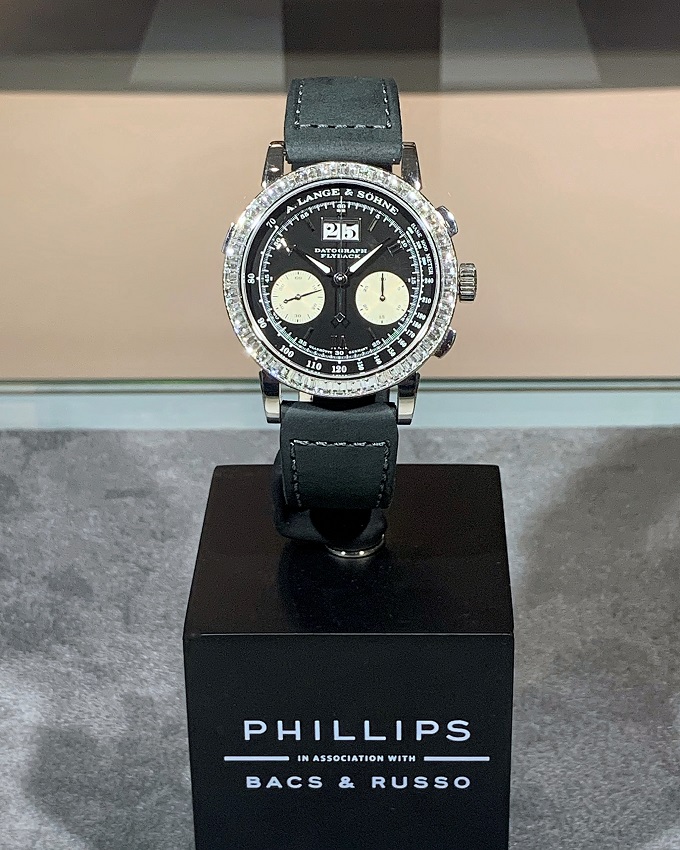
Datograph 815.036 with baguette diamond bezel
One thing that I thought worked really well was that the watches were displayed such that there were examples paired together which illustrated these changes and being able to see them side by side (as well as highlighted in the series of stunning photos on the wall around the exhibition) made it really easy to see what was being pointed out and appreciate the differences in the models.
It was clear from speaking with one of the Specialists at Phillips that this exhibition had been a passion project driven by a love and respect for A. Lange & Söhne as a brand and its horological significance, and to be able to share this with the wider watch community.
The exhibition took the team the best part of a year to curate, finding and sourcing pieces to be displayed, as well as the undertaking the research it to ensure that the exhibition was well explained and told the story of these early A. Lange & Söhne watches.
And it certainly showed. Bravo, Phillips!
In Summary
I thought this exhibition was wonderful. As a watch enthusiast, the opportunity to see and enjoy such rare pieces and learn more about what truly is one of the finest watch brands in the world is not something that comes along very often.
A huge thank you to the team at Phillips for going to such an extraordinary effort on curating such an exhibition. The team did a fantastic job and I can only hope that following on from Phillips ‘Made in Germany’ there may be other such exhibitions in future!
If you’re interested in learning more about A. Lange & Söhne, you can visit ALange-Soehne.com or for more of an enthusiast’s perspective, Langepedia.
If you have any questions, please get in touch via our Contact page, or via our Instagram.
You might also be interested in:
- “It’s complicated”: an introduction to the Chronograph
- A Visit to the Clockmakers’ Museum, London
- Jean-Claude Biver: A Retrospective, Share Respect Forgive
- Watch Stationery and Gift Ideas
- Watch Books, Watch Boxes and more at the Watch Affinity Shop on Amazon (commissions earned)
As an Amazon Associate, I earn from qualifying purchases – thank you for your support

